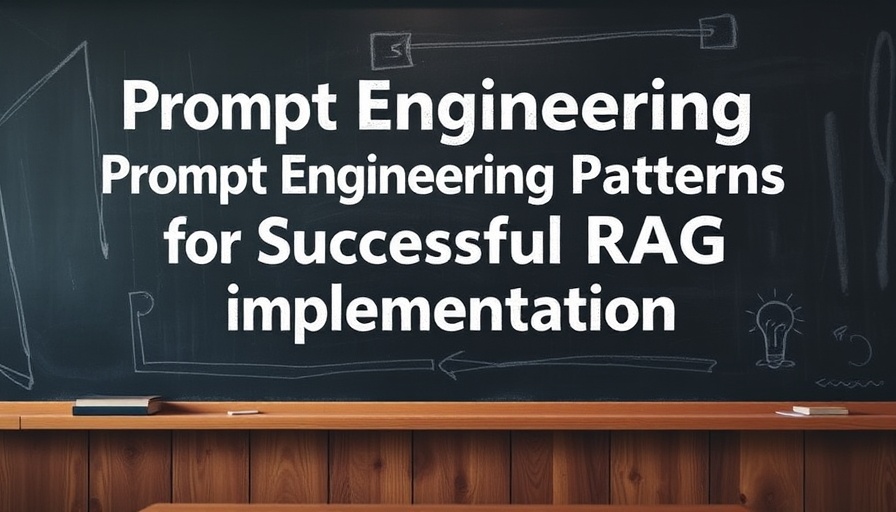
Maximizing RAG Implementations: Essential Prompt Engineering Techniques
The increasing reliance on generative AI and large language models (LLMs) reflects a significant shift in how businesses approach information acquisition. These models offer impressive outputs through simple prompts, but inaccuracies can disrupt user trust and efficacy. Enter Retrieval-Augmented Generation (RAG), a strategic approach that enhances the result quality of LLMs by integrating external knowledge into the response generation process.
Understanding RAG: A Game Changer for Digital Transformation
RAG operates on the premise that by enriching prompts with real-time data from knowledge bases, the quality of generated content significantly improves. This method not only reduces errors but also ensures that outputs are contextually relevant. As businesses undergo digital transformation, RAG emerges as a linchpin that allows LLMs to provide precise and informed answers. This capability is particularly vital for executives steering dynamic companies in rapidly evolving industries.
The Power of Prompt Engineering in RAG
At the heart of RAG’s success lies prompt engineering. Effective prompts guide both the retrieval component and the generative aspect of LLMs. The focus is on enhancing queries to ensure the most pertinent information is extracted from the knowledge base. Simple queries might yield generic results, but refined prompts can reveal deeper insights that drive decision-making. The strategic use of prompts allows teams to leverage their domain expertise and tailor responses to specific user needs.
Core Techniques in Effective RAG Prompting
1. Query Expansion: This technique emphasizes evolving the current query to garner more relevant responses. By requesting the LLM to generate synonyms or domain-specific terms, businesses can increase the likelihood of retrieving pertinent documents. For example, an effective prompt might direct the model to produce three nuanced variations of a query, enhancing the chances for success.
2. Contextual Continuity: Utilizing previous dialog history can refine the current query. By integrating past interactions, businesses can improve relevance and coherence, ensuring users receive consistent answers. Such prompts should encourage LLMs to transform a new query based on relevant historical data, thereby streamlining user experiences.
3. Hypothetical Document Embeddings (HyDE): This innovative approach directs the LLM to contemplate potential outcomes based on hypothetical documents. By framing the prompt to elicit imaginative but informative responses, users can tap into the creative potential of LLMs, leading to rich, nuanced outputs.
Navigating Future Trends in RAG Usage
As RAG becomes more prominent in business applications, we can expect ongoing innovations in prompt engineering techniques. Executives should anticipate a landscape where LLMs are not just tools but integrated parts of decision-making processes. Emerging methodologies, such as the use of chained prompts that guide LLMs through complex tasks, will redefine user interactions.
Ultimately, RAG represents a diving board into more accuracy and relevance for large language models. Companies prioritizing robust prompt engineering strategies position themselves at the forefront of AI innovation, harnessing data-driven insights that enhance their operational excellence.
For digital transformation leaders, investing in prompt engineering not only enhances the efficacy of AI applications but also fosters a culture of continuous improvement—a necessity in today’s competitive landscape.
 Add Row
Add Row  Add
Add 




Write A Comment